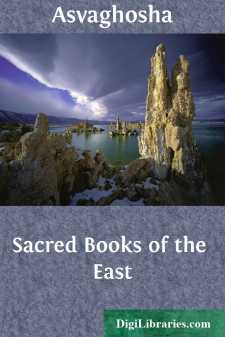Categories
- Antiques & Collectibles 13
- Architecture 36
- Art 48
- Bibles 22
- Biography & Autobiography 813
- Body, Mind & Spirit 142
- Business & Economics 28
- Children's Books 14
- Children's Fiction 11
- Computers 4
- Cooking 94
- Crafts & Hobbies 4
- Drama 346
- Education 46
- Family & Relationships 57
- Fiction 11828
- Games 19
- Gardening 17
- Health & Fitness 34
- History 1377
- House & Home 1
- Humor 147
- Juvenile Fiction 1873
- Juvenile Nonfiction 202
- Language Arts & Disciplines 88
- Law 16
- Literary Collections 686
- Literary Criticism 179
- Mathematics 13
- Medical 41
- Music 40
- Nature 179
- Non-Classifiable 1768
- Performing Arts 7
- Periodicals 1453
- Philosophy 64
- Photography 2
- Poetry 896
- Political Science 203
- Psychology 42
- Reference 154
- Religion 513
- Science 126
- Self-Help 84
- Social Science 81
- Sports & Recreation 34
- Study Aids 3
- Technology & Engineering 59
- Transportation 23
- Travel 463
- True Crime 29
Sacred Books of the East
by: Asvaghosha
Description:
Excerpt
INTRODUCTION
The Vedic Hymns are among the most interesting portions of Hindoo literature. In form and spirit they resemble both the poems of the Hebrew psalter and the lyrics of Pindar. They deal with the most elemental religious conceptions and are full of the imagery of nature. It would be absurd to deny to very many of them the possession of the truest poetic inspiration. The scenery of the Himalayas, ice and snow, storm and tempest, lend their majesty to the strains of the Vedic poet. He describes the storm sweeping over the white-crested mountains till the earth, like a hoary king, trembles with fear. The Maruts, or storm-gods, are terrible, glorious, musical, riding on strong-hoofed, never-wearying steeds. There is something Homeric, Pindaric in these epithets. Yet Soma and Rudra are addressed, though they wield sharp weapons; and sharp bolts, i.e., those of the lightning, are spoken of as kind friends. "Deliver us," says the poet, "from the snare of Varuna, and guard us, as kind-hearted gods." One of the most remarkable of these hymns is that addressed to the Unknown God. The poet says: "In the beginning there arose the Golden Child. As soon as he was born he alone was the lord of all that is. He established the earth and this heaven." The hymn consists of ten stanzas, in which the Deity is celebrated as the maker of the snowy mountains, the sea and the distant river, who made fast the awful heaven, He who alone is God above all gods, before whom heaven and earth stand trembling in their mind. Each stanza concludes with the refrain, "Who is the God to whom we shall offer sacrifice?"
We have in this hymn a most sublime conception of the Supreme Being, and while there are many Vedic hymns whose tone is pantheistic and seems to imply that the wild forces of nature are Gods who rule the world, this hymn to the Unknown God is as purely monotheistic as a psalm of David, and shows a spirit of religious awe as profound as any we find in the Hebrew Scriptures.
It is very difficult to arrive at the true date of the Vedas. The word Veda means knowledge, and is applied to unwritten literature. The Vedas are therefore the oldest Sanscrit writings which exist, and stand in the same class with regard to Hindoo literature as Homer does with regard to Greek literature. Probably the earliest Vedas were recited a thousand years before Christ, while the more recent of the hymns date about five hundred before Christ. We must therefore consider them to be the most primitive form of Aryan poetry in existence.
There is in the West a misunderstanding as to the exact meaning of "Vedic" and "Sanscrit"; for the latter is often used as if it were synonymous with Indian; whereas, only the later Indian literature can be classed under that head, and "Vedic" is often used to indicate only the Vedic Hymns, whereas it really denotes Hymns, Bráhmanas, Upanishads, and Sutras; in fact, all literature which orthodox Hindoos regard as sacred. The correct distinction then between the Vedic and the Sanscrit writings is that of holy writ and profane literature....


